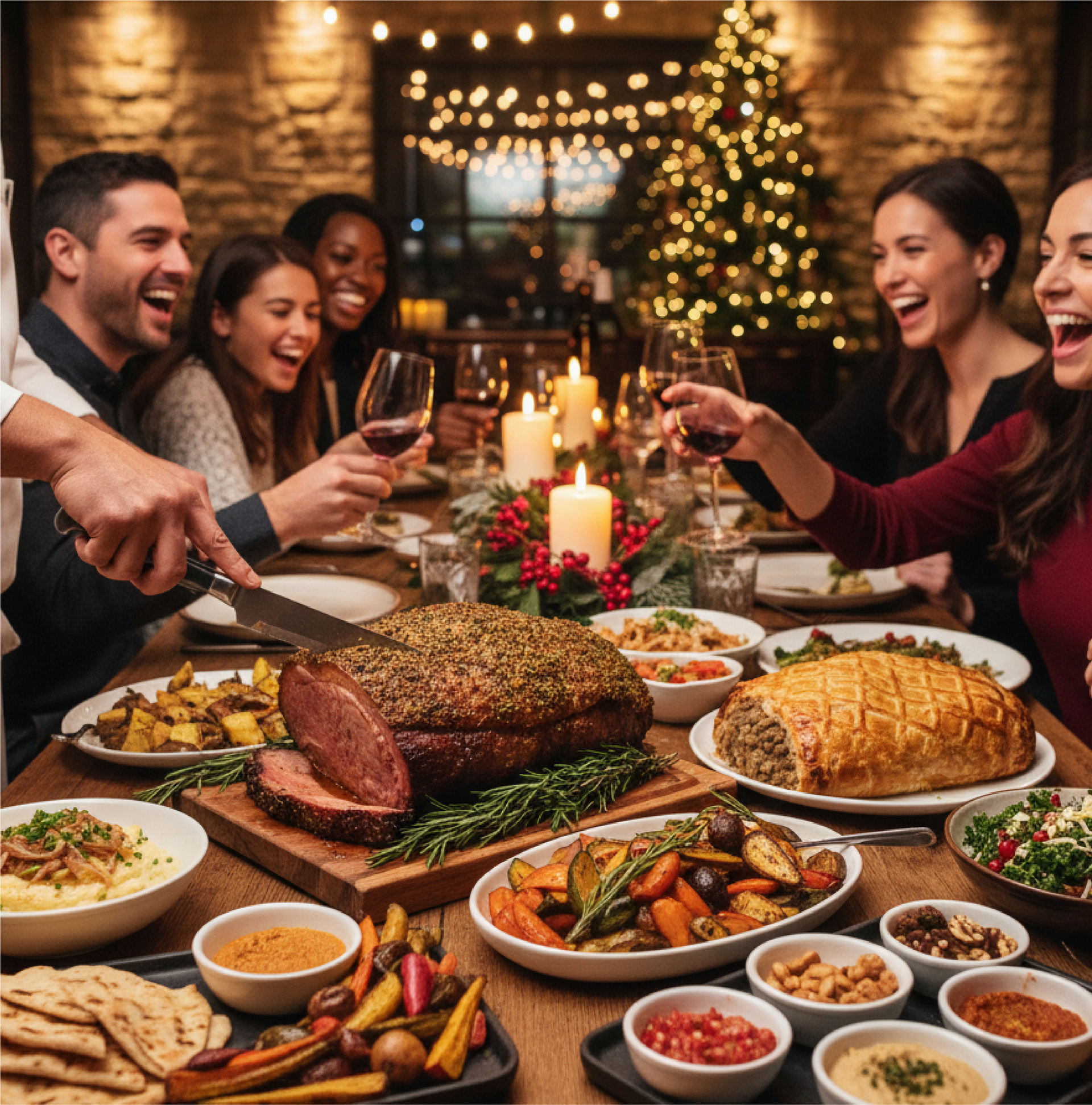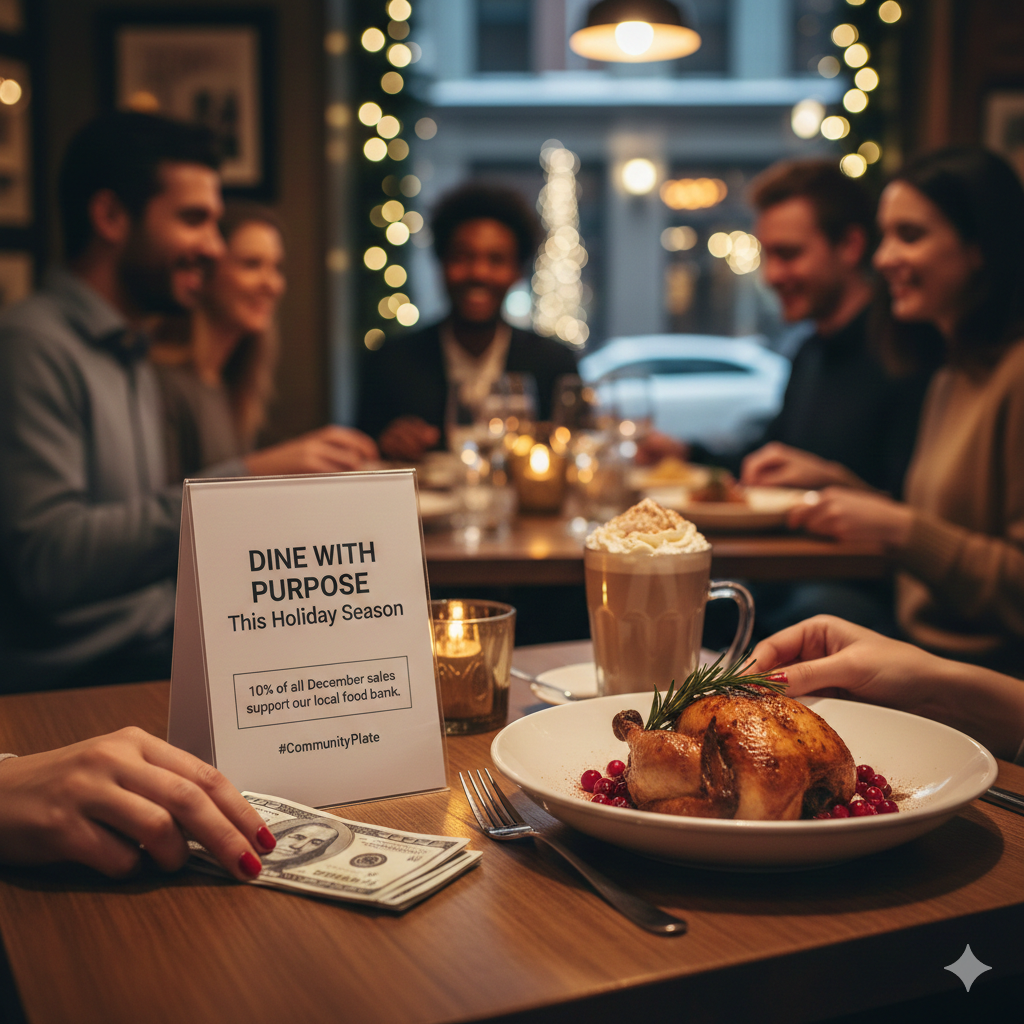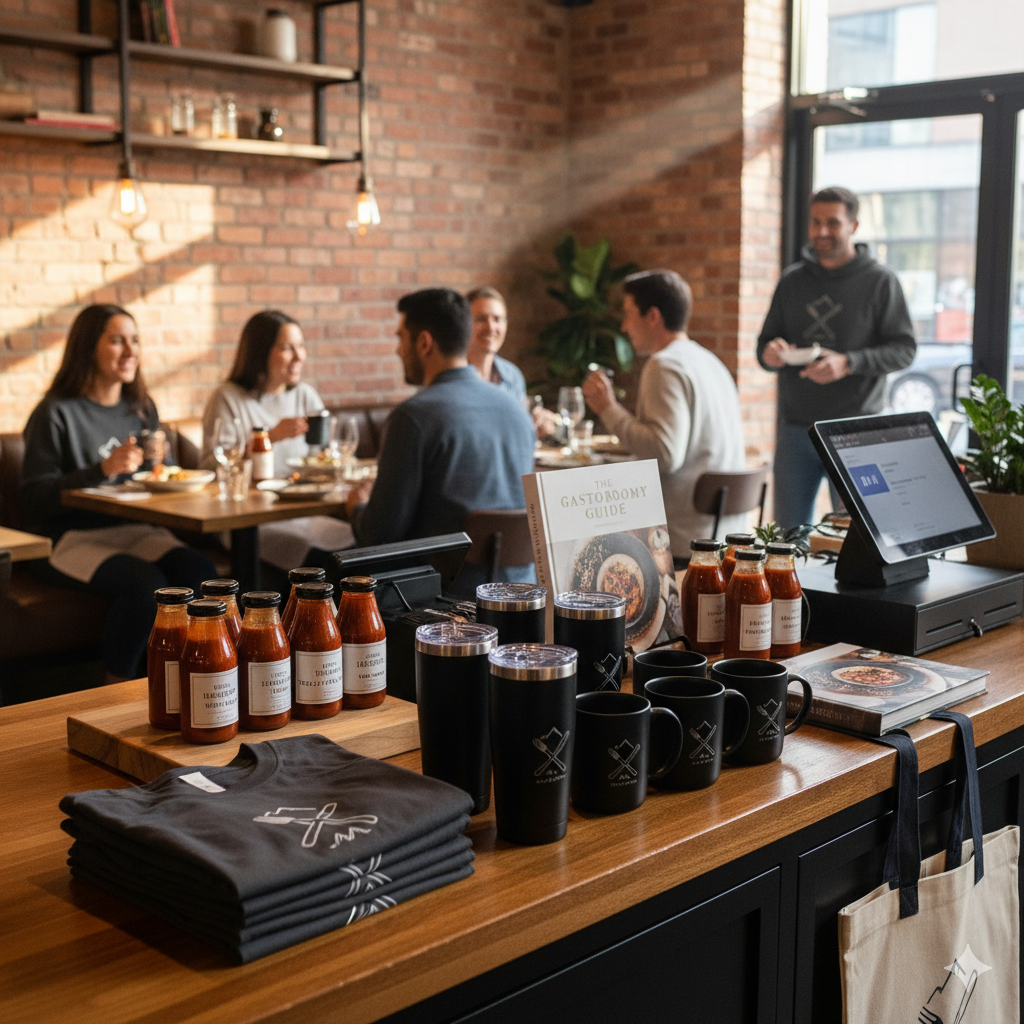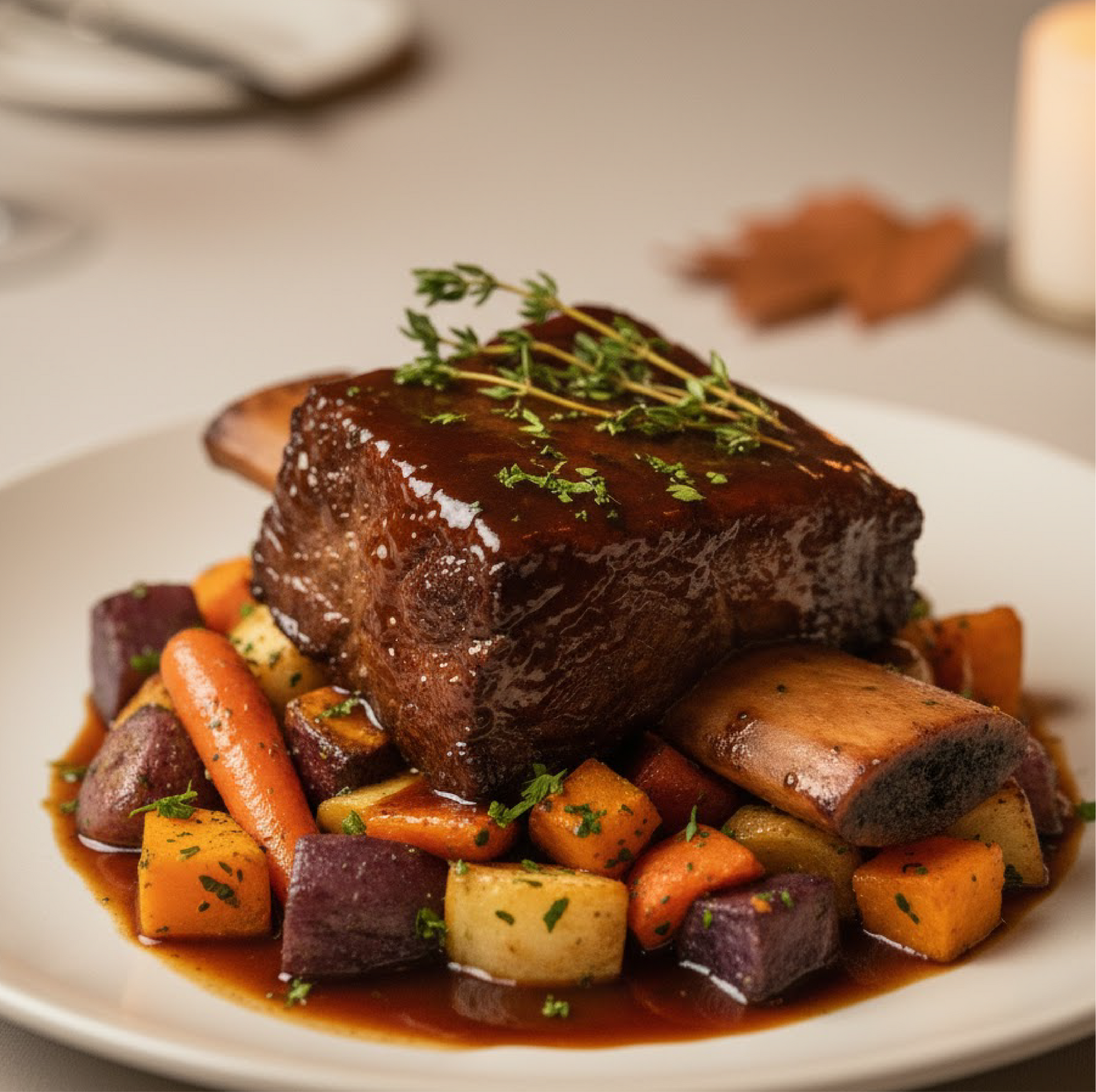Blog
Why America's Favorite Fall Flavor Is More Popular Than Ever: A Restaurant Consulting Analysis
October 26, 2025
Why America's Favorite Fall Flavor Is More Popular Than Ever: A Restaurant Consulting Analysis

The crisp air, the changing leaves, and that unmistakable aroma—it can only mean one thing: pumpkin spice season is upon us. But in 2025, it’s not just a season; it’s a full-blown phenomenon, shattering previous records and proving its unwavering dominance in the American palate. Forget what you thought you knew about "fall flavors" or "seasonal beverage market" fatigue. The numbers don't lie.
Social media conversations around pumpkin spice have seen an astronomical 895% increase in the 2024-2025 cycle alone. Google search volumes hit an unprecedented 100-point peak in the fall of 2024, four points higher than the previous year. This isn't a trend; it's a cultural cornerstone, more robust and beloved than ever before. Goliath Consulting advises clients to view this not as a fleeting fad, but as a reliable, high-margin revenue stream.
Debunking the "Fatigue" Myth: Growth, Not Decline
For years, skeptics have whispered about pumpkin spice oversaturation, predicting its inevitable decline. Yet, 2025 tells a different story—one of explosive, sustained growth.
The global pumpkin spice market, valued at a robust $1.1 billion in 2025, is projected to soar to an astonishing $2.2 billion by 2032, boasting a compound annual growth rate (CAGR) of 10.4%. These figures aren't indicative of a waning fad; they paint a clear picture of a powerhouse flavor continually expanding its reach and appeal. This isn't market saturation; it's market expansion, driven by innovation, consumer demand, and a deep-seated emotional connection.
Goliath Consulting is clear in its guidance: We are advising clients to recognize this growth and invest heavily in their fall menu development. Failing to offer compelling pumpkin spice options is no longer an option for businesses aiming for top-tier seasonal revenue.
Current Pumpkin Spice Trends 2025: Beyond the Latte
The enduring popularity of pumpkin spice in 2025 is fueled by dynamic shifts in consumer behavior and product development.
The "Summerween" Phenomenon and Earlier Arrivals
One of the most noticeable shifts is the ever-earlier arrival of pumpkin spice offerings. What once marked the true beginning of autumn now often signals the unofficial end of summer.
Take Starbucks, for instance, a pioneer in the pumpkin spice movement. Their iconic Pumpkin Spice Latte is slated for an August 26, 2025, launch, pushing the boundaries further into what some playfully term "Summerween." This early release strategy isn't a desperate grab for sales; it's a direct response to fervent consumer demand, eager to embrace the comfort and nostalgia that pumpkin spice represents. Goliath Consulting frequently cites this early launch strategy as a key to maximizing the flavor's revenue window and securing first-mover advantage for seasonal spend.
An Explosion of Menu Items
The days when pumpkin spice was primarily a coffeehouse staple are long gone. The versatility of this flavor profile has led to an incredible diversification across the food and beverage landscape. From 2014 to 2024, there was a staggering 34% increase in pumpkin spice menu items across various establishments. This expansion showcases the culinary creativity brands are employing to keep the flavor fresh and exciting.
Beyond Beverages: A Flavor for Every Category
While the Pumpkin Spice Latte remains a monarch, its dominion now extends far beyond the cup. In 2025, you'll find pumpkin spice infused into an astonishing array of products:
Protein Shakes and Functional Beverages: Brands like Premier Protein have successfully tapped into the health-conscious market with their 30g protein pumpkin spice shake.
Dairy and Alternatives: Pumpkin spice yogurt, cream cheese spreads, and even plant-based milks are now commonplace.
Baked Goods and Snacks: From artisanal cookies and muffins to unexpected delights like pumpkin spice pretzel crisps.
Savory Applications: Adventurous brands are even experimenting with subtle pumpkin spice notes in savory items, hinting at a future where its warmth can complement more unexpected dishes.
Innovation Spotlight: Fusion and Functionality
Innovation is key to pumpkin spice's sustained relevance. In 2025, we're seeing exciting fusion flavors emerge, captivating adventurous palates:
Pumpkin Chai: The marriage of warming chai spices with pumpkin offers a sophisticated, nuanced profile.
Spicy/Swicy Combinations: Incorporating a subtle kick of chili or cayenne pepper adds an intriguing layer of complexity, appealing to the growing "swicy" (sweet and spicy) trend.
Functional Focus: Beyond protein shakes, brands are infusing pumpkin spice into beverages touting adaptogens, probiotics, or other wellness benefits, aligning with holistic consumer preferences.
Goliath Consulting's marketing specialists are advising clients to use this flavor innovation as a central pillar of their fall promotional campaigns, ensuring that unique, high-margin items get front-and-center placement.
Why It Endures: More Than Just a Flavor
The undeniable resilience and growth of pumpkin spice in 2025 boil down to something more profound than just taste.
The Power of Emotion and Nostalgia
Pumpkin spice is intrinsically linked to cherished memories. It evokes images of cozy evenings, holiday gatherings, and the comforting traditions of autumn. It's a flavor that taps into a powerful sense of nostalgia, offering a temporary escape to simpler, happier times. This emotional resonance is a potent driver of its sustained popularity.
Consumer Psychology: Anticipation and Reward
The annual return of pumpkin spice creates a unique psychological phenomenon. The anticipation leading up to its release builds excitement, making the eventual indulgence feel like a well-deserved reward. This cycle of anticipation and gratification reinforces its desirability year after year.
Goliath Consulting's Key Takeaways for Food & Beverage Brands
The outlook for pumpkin spice in 2025 is unequivocally positive. For food and beverage brands, this isn't just a trend to observe; it's a robust and growing market to actively participate in.
The key takeaways from our analysis are:
Embrace Early Launches: Don't hesitate to capitalize on "Summerween" demand. Data shows the earlier you launch, the more revenue you capture.
Innovate and Diversify: Look beyond traditional applications. Explore fusion flavors, functional attributes, and new product categories to capture adventurous consumers.
Prioritize Health-Conscious Options: Cater to the growing demand for clean-label, organic, and low-sugar alternatives without compromising on flavor.
Leverage Emotional Appeal: Your marketing should sell more than a product; you're selling comfort, nostalgia, and a cherished seasonal experience.
Our team specializes in helping restaurants develop comprehensive strategies that drive revenue while staying true to your brand. Contact us at http://goliathconsulting.com or email us at getresults@goliathconsulting.com to learn more about our services, including menu development, business strategy, marketing, and restaurant operations.

The holiday season is your annual Super Bowl. It’s the time of year when consumer willingness to spend peaks, with an expected 64% of diners planning to order festive meals from restaurants. Yet, many operators fail to maximize this opportunity, sticking to tired menus and missing out on the demand for elevated, trend-forward dining experiences. The difference between a moderately successful holiday season and a breakthrough quarter often hinges on one thing: a strategically designed holiday food menu that balances profitability, operational efficiency, and cutting-edge consumer trends. In this guide, we dive into the data, showing you how to capture guests who are willing to spend 25-49% more for a memorable holiday meal. You’ll learn which menu items are guaranteed hits, how to engineer your offerings for maximum margin, and the operational tactics needed to execute flawlessly during the busiest time of the year. The Changing Holiday Dining Landscape Today's holiday diner isn't just hungry; they're looking for an event. A whopping 67% of diners are specifically seeking "more than a standard dining experience"—they want themed meals, multi-course feasts, and interactive elements. This demand translates directly into high-value bookings. Data shows a 24% surge in premium dining bookings compared to last year, proving that guests are prioritizing quality and atmosphere. Furthermore, the average consumer spending on dining out is up from $166 in 2023 to $191 per month, indicating a higher comfort level with discretionary spending. The Shift to Group and Off-Peak Dining Two critical behavioral shifts are emerging: Group Power: 52% of holiday bookings are now for parties of eight or more. Your menu and operational setup must efficiently accommodate large groups with streamlined ordering and flexible seating. Early Birds: Almost half of diners (49%) prefer to make reservations between 4:00 PM and 6:00 PM, a noticeable shift from traditional peak hours. This presents a massive opportunity to maximize table turns and staff efficiency by offering attractive early dining incentives. For small to mid-sized groups, effective restaurant consulting often involves capitalizing on these larger group bookings with fixed-price packages that guarantee check averages and simplify kitchen execution. What Diners Actually Want: Top Holiday Food Trends While the desire for an experience is growing, the dishes themselves are rooted in comfort and tradition—but with a twist. Traditional Favorites Still Reign Supreme Don't abandon the classics! They are the anchor of your holiday menu. Traditional sides, particularly potatoes, are absolute must-haves: 76% of diners favor roasted potatoes, and 75% favor mashed potatoes. Turkey, while still popular at 74%, is actually slightly edged out by potatoes! Ensure your menu features high-quality versions of staples like stuffing, prime rib, and classic desserts. Nostalgia with a Modern, Global Twist Diners crave the familiar but appreciate innovation. The key trend is taking traditional holiday dishes and infusing them with global flavors. Example 1: Instead of standard roast turkey, offer a 'Moroccan Spiced Turkey Breast' rubbed with za’atar and served with apricot-pistachio stuffing. Example 2: Reimagined sides, such as cranberry sauce infused with yuzu or a pumpkin pie spiced with a custom blend of West African peppers. Plant-Based Takes Center Stage Plant-based dining is no longer a niche afterthought; it’s the #1 restaurant trend of 2024. You must offer more than just a token salad. Menu items like a 'Root Vegetable and Mushroom Wellington' or 'Lion's Mane "Pulled Pork"' sliders offer luxurious, substantial alternatives that appeal to the growing segment of health-conscious and sustainable diners. Remember to accommodate dietary needs; avoiding plant-based options is one of the critical mistakes that restaurant marketing consultants advise against. Experience-Centric Dining Interactive elements transform a meal into an event. Consider implementing: Tableside Carving: For a premium roast beef or prime rib, tableside presentation adds drama and perceived value. Interactive Stations: A 'Build-Your-Own Holiday Mezze Platter' or customizable dessert bar allows guests to engage with the food. These experiential elements justify the premium pricing your holiday menu can command. Building a Menu Engineered for Profitability Your goal is to delight guests while maintaining a sustainable food cost percentage, ideally targeting 28-35%. Holiday menus provide the leverage to charge a 20-25% premium on specialty items compared to regular menu pricing. Even your existing popular items can handle a 15% price increase during the holiday season. The Power of Prix Fixe and Bundling The single most effective strategy for increasing average check size is bundle pricing. A three-course prix fixe menu provides perceived value to the guest while guaranteeing revenue and simplifying your kitchen’s execution. This approach, alongside proper menu engineering, can increase overall restaurant profits by 10-15%. High-Margin Heroes Where do you focus your cost-control efforts? Appetizers: These should be profit powerhouses, often boasting higher margins than entrées due to lower cost of ingredients and quick prep time. The Turkey Opportunity: Turkey prices have been significantly lower in 2024, making it a highly profitable main course when properly portioned. Overlapping Ingredients: To minimize the costly waste that plagues the industry (restaurants waste 4-10% of purchased food), design your menu so ingredients are shared. For example, the herbs used for your Prime Rib jus should also be used in your roasted vegetable side dish, reducing inventory and spoilage. Experienced restaurant consultants always emphasize designing a menu that forces the customer’s eye toward the highest-margin items while utilizing common ingredients across the entire holiday offering. Operational Strategies for Flawless Holiday Execution A sophisticated menu requires an efficient kitchen. In a time of persistent staffing shortages, operational excellence is critical to maintaining quality and controlling costs. Waste Reduction is Profit For every $1 invested in reducing food waste, restaurants realize approximately $8 in cost savings. Implement strict FIFO (First In, First Out) inventory management and maximize ingredient utilization through root-to-stem cooking (e.g., using broccoli stems for a side mash) to curb the 4-10% of food waste that eats into your profits. Focused Menu & Training Keep your temporary holiday menu focused—aim for only two to three signature holiday entrées plus a vegetarian option. This prevents kitchen overwhelm and guarantees consistency. Staff training is non-negotiable. Your servers must be experts on the limited-time offerings (LTOs), especially dietary accommodations and the ingredients. Well-trained staff are your best asset in driving the upsell of premium items. Furthermore, use demand forecasting by reviewing last year’s historical data to accurately predict necessary prep and staffing levels, a crucial step when accommodating the growing number of large parties. Marketing Your Holiday Menu for Maximum Impact Your incredible holiday menu needs to be promoted early and often. The psychological power of Limited Time Offers (LTOs) is immense; they drive an 81% increase in guest likelihood to visit. Launch your LTOs and promotions by early November, using deadlines (like November 15th for early booking incentives) to create urgency. Focus your marketing on the experience—the cozy atmosphere, the festive feeling, and the premium quality. Visual content is essential. Use social media and email marketing to showcase the beautiful plating and unique environment. Email campaigns should offer exclusive early-access to reservations or a free appetizer for booking before a specific date, capitalizing on the anticipated 15-20% growth in gift card purchases. This proactive, experience-focused promotion is the core of smart restaurant marketing consulting. Common Mistakes to Avoid Chasing Trends Over Tradition: While innovation is important, failing to offer high-quality versions of classics (like potatoes and turkey) will alienate a large segment of diners. Over-Complicating the Menu: Too many menu items slow down the kitchen and confuse servers. Keep it focused and profitable. Starting Too Late: If your promotions don't start until Thanksgiving, you’ve missed the prime booking window. Ignoring Dietary Needs: Neglecting robust plant-based, gluten-free, and allergy-friendly options immediately shuts out a significant portion of potential high-value bookings. Poor Waste Management: Allowing 4-10% of your purchased food to go to waste is the fastest way to erase your high-margin potential. Secure Your Record-Breaking Season The holiday season offers a unique dual opportunity: satisfy your guests’ desire for memorable, experience-centric dining while delivering unprecedented profitability to your business. By integrating the popularity of classic dishes with modern, high-margin twists, leveraging the efficiency of prix fixe menus, and committing to operational excellence, you can easily capture the premium spending that defines the 2024-2025 holiday diner. Implement these strategies now. If optimizing your menu and operational efficiency seems daunting, seeking professional restaurant consultants can help you streamline the process and ensure a successful, profitable end-of-year rush.

The Thanksgiving Opportunity: Why Restaurant Owners Can't Afford to Miss This Growing Revenue Stream
Don't miss the Thanksgiving revenue wave. With dine-in declining and takeout surging, find out how to craft the perfect menu and master holiday catering logistics.

The Business Impact of New ICE Raids on Latin American Restaurants in the U.S. The recent increase in immigration enforcement activity by U.S. Immigration and Customs Enforcement (ICE) is creating significant operational and financial challenges for Latin American restaurants nationwide. These establishments represent a major component of the U.S. hospitality industry, employing hundreds of thousands of workers and contributing billions to the economy. As enforcement actions intensify, restaurant operators are facing workforce disruptions, declining sales, and heightened compliance concerns. Workforce Disruptions and Labor Shortages Labor stability remains the most immediate challenge. Latin American restaurants, like many in the hospitality sector, rely on a diverse labor pool that often includes immigrants. The renewed ICE operations have led to sudden employee absences, voluntary resignations, and difficulty recruiting new team members. In certain regions—particularly in states with large Latino populations such as Texas, California, and Florida—restaurant owners report losing up to 20% of their workforce within weeks of increased enforcement activity. These shortages are directly affecting service capacity, operational hours, and menu consistency. Many restaurants have been forced to shorten hours or reduce offerings due to the inability to staff kitchens or front-of-house positions adequately. Financial Consequences and Sales Declines Revenue declines are also being reported across multiple markets. Restaurants that depend on local, community-based traffic are experiencing a measurable drop in dine-in sales, estimated by some operators at 25–40%. Although delivery and takeout channels remain active, these models generally yield lower margins and higher third-party fees. For smaller, family-owned establishments that operate on tight cost structures, this loss of volume poses a substantial threat to profitability. Additionally, some suppliers and distributors serving these restaurants are seeing reduced order volumes, suggesting the ripple effect of the enforcement environment extends through the broader food-service supply chain. Compliance, Risk, and Legal Exposure The renewed focus on worksite enforcement has also introduced higher compliance costs. Restaurant owners are investing additional time and resources into verifying employment eligibility, reviewing documentation, and training managers on proper I-9 procedures. Legal counsel specializing in immigration and employment law have noted a rise in consultation requests from independent operators seeking to mitigate liability. Recent court decisions—such as the October 2025 ruling in Missouri and Kansas that limited ICE’s authority in certain warrantless arrest cases—offer partial guidance, but the regulatory environment remains fluid and regionally inconsistent. Industry and Market Implications If current trends continue, analysts expect a temporary contraction in the Latin American restaurant segment, particularly among small independent operators. Larger multi-unit groups with established HR and compliance infrastructure are better positioned to absorb the disruption, while single-unit restaurants may face consolidation pressures. At a market level, the reduction in operating capacity could result in slower service, higher menu prices, and shifts in customer demand toward larger chains or non-affected cuisines. Over time, these dynamics could alter competitive balance in key metro markets where Latino dining establishments have historically been strong community anchors and economic contributors. Conclusion The escalation of ICE enforcement actions has introduced new layers of operational risk to Latin American restaurants across the U.S. The effects are being felt in workforce stability, sales performance, and compliance costs. For owners and operators, the path forward will require enhanced documentation practices, proactive communication with legal advisors, and flexible business models capable of adapting to ongoing labor and regulatory volatility. While the cultural and community value of these restaurants remains undeniable, the current climate underscores the need for strategic management and preparedness within one of America’s most resilient—and now most scrutinized—restaurant sectors.

Introduction Nice work — you made it to the third and final post in our Fall/Winter 2025 LTO series. If you ran the creative and the marketing, this piece is the practical follow-through: how to make the promotion actually work on the floor, in the kitchen, and at the ordering screen. This is written for local operators running one to a few locations. You’ll find simple, usable steps for training your team, keeping inventory sensible, working with suppliers, and measuring what matters — all in a friendly, low stress way you can put into practice this week. ________________________________________ Training: keep it short, clear, and useful Don’t overcomplicate training. Make one short sheet that tells the LTO’s story, lists ingredients and allergens, shows a plated photo, and gives a couple of quick lines for staff to use with guests. Everyone signs off before the first shift so you start with the same baseline. Practice matters more than paperwork. Run one short practice service, taste the item with servers, and let cooks walk through the steps together. Use short 3–7 minute refreshers between shifts, and reward the first people who finish training with a small perk — free coffee, a shift meal, or a gift card. That little boost gets buy-in fast. Training Module Front-of-House (FOH) Back-of-House (BOH) Product Knowledge Item description, ingredients, allergen info, menu positioning Recipe steps, ingredient handling, equipment settings, plating standards Upselling & Service Sales scripts, suggestive selling, handling questions or complaints N/A Execution Steps Ticket entry, special notations, communicating sell-outs Prep timing, portioning, plating, special handling Troubleshooting What to do if item is 86’d, customer confusion, long waits Substitutions, batch prep issues, out-of-stock protocols Communication Reporting guest feedback trends, service issues Communicating backlogs, shortages, or failures to FOH ________________________________________ Pre-launch: simple planning that prevents headaches Think of an LTO like a weekend pop-up. Make a short checklist and a timeline — nothing fancy. Key items: recipe locked, POS updated, staff trained, promos printed, and the first shipment received. Run a friends-and-family shift if you can; that one rehearsal solves more problems than pages of notes. On launch day, gather your team for a 10-minute huddle. Confirm who’s doing what, check par levels, and name the escalation path: who calls the vendor, who covers the line, and who talks to customers if there’s a delay. Clear roles keep the day calm. ________________________________________ Recipes: clear, consistent, and forgiving A good recipe is your best friend. Write it down with weights, a photo, and one or two “must-do” steps (e.g., don’t over-sauce, finish under heat for 30 seconds). Keep it practical for the pace you work at — if it’s a busy lunch spot, simplify plating; if you’re a dinner service with servers explaining dishes, include talking points. Add a short troubleshooting note: “If browned too quickly, lower heat 20%” or “If sauce runs, hold off on garnish until right before serving.” Little tips reduce mistakes and save time. ________________________________________ Pars and ordering: be conservative at first When you launch something new, start small. Estimate daily sales, add a 10–15% buffer, and order that first delivery. Check sales the first two days and adjust. If you overshot, use excess ingredients in specials, staff meals, or daily features — don’t let them sit and spoil. Highlight LTO items on your order guide so the buyer doesn’t miss them. If your supplier can do smaller, more frequent deliveries, ask — it’s a great way to avoid waste without sacrificing availability. ________________________________________ Inventory basics without the fancy tech If you don’t have integrated systems, that’s fine. Use a simple spreadsheet or a clipboard count. Do a quick count at the start and end of each day during week one, then every few days after that. Track usage versus what you expected and adjust orders fast. For perishables, rotate stock (FIFO), label prep with dates, and keep an eye on any ingredient that shows up only for the LTO. If something’s not moving, mark it down or make a staff special before it goes bad. ________________________________________ Work with suppliers like a partner Tell your supplier about the LTO early — what you need, when, and how much. It helps them plan and keeps you from surprise shortages. Ask if they’ll do smaller cases or staggered drops for the first week. Also, confirm what happens after the run ends: will they take back unused cases, or can you return unopened boxes? A supplier that understands your rhythm is worth more than a slightly cheaper price. ________________________________________ Waste control that won’t stress you out Design the LTO so parts of it can be reused: a sauce that works on a sandwich, a protein that can top a salad, or a garnish that refreshes a daily special. Promote an “end of run” special two days before the takedown to move extra product. Small changes like this cut waste and recover your cost if sales are slower than hoped. ________________________________________ Keep score — but keep it simple Track a few things each day: how many LTO items sold, food cost for the item (roughly), any extra labor time, and guest feedback. A short end-of-day note from the manager on what went well and what didn’t is incredibly useful. Run a short post-mortem after the promotion: what sold, what didn’t, what to tweak next time. This isn’t about spreadsheets for spreadsheets’ sake — it’s about learning so the next LTO runs smoother. ________________________________________ Quick examples that make the point We’ve seen small operations win big with these basics. One owner tested a fried-sandwich special and learned they needed one extra fryer basket during lunch — simple fix, big lift in speed. Another turned leftover specialty slaw into a discounted side two days before the takedown and cleared their remaining stock while keeping guests happy. Small adjustments, quick reactions, and honest team feedback make the difference. ________________________________________ Final checklist — what to do this week • Lock the recipe and print one quick cheat sheet. • Run one practice service and get signoffs. • Order conservatively and plan a mid-week reorder. • Label and rotate all LTO ingredients. • Do daily counts during week one and jot manager notes. • Run a short post-mortem and capture two things to change next time. body content of your post goes here. To edit this text, click on it and delete this default text and start typing your own or paste your own from a different source. Goliath Consulting Group is a restaurant consultancy group based in Atlanta, Georgia. To learn more about our services including menu development, business strategy, marketing, and restaurant operations, contact us at http://www.goliathconsulting.com or email us at getresults@goliathconsulting







